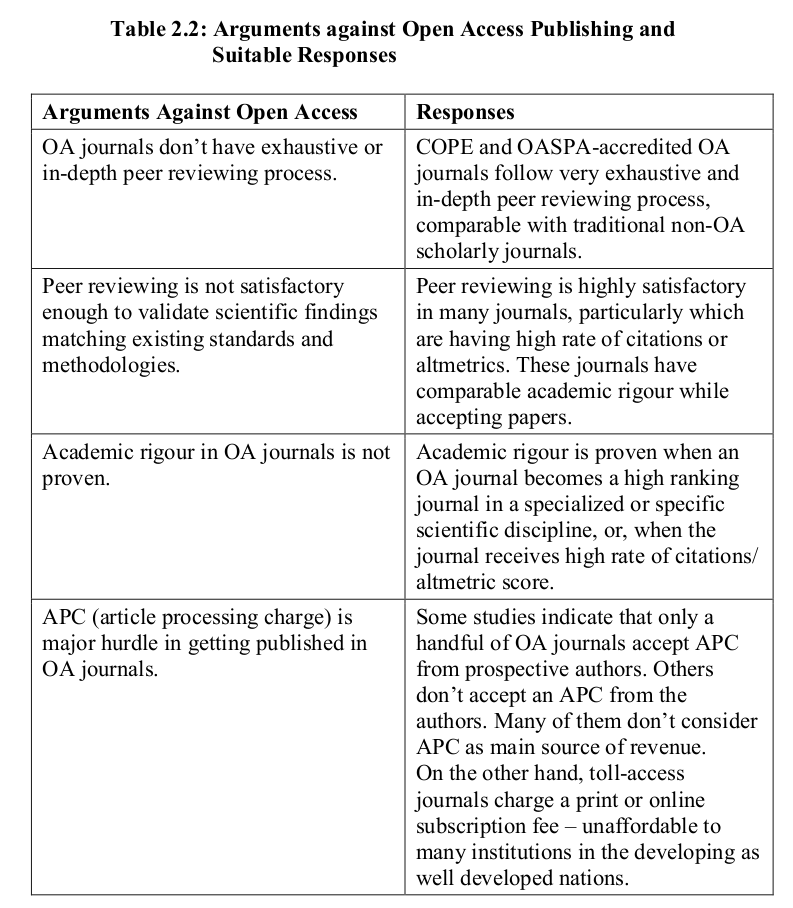2.7 Arguments against Open Access and Responses
In the first two decades of the 21 st century, we see high growth rate of the number of OA journal titles. DOAJ has recorded about 9750 scholarly OA journals, whereas OpenDOAR recorded about 2600 OA repositories available across the world as on March 2014. We also have observed that there is also entry of predatory OA journals, promising quick publishing avenue to researchers – obviously with a price of APC paid by the prospective authors. However, there are various checks and balances to restrict operations of predatory OA journals, such as strict inclusion criteria at DOAJ and OASPA. Beall List (ScholarlyOA.com) also provides regular alerts to scholarly communities about potential, possible, or probable predatory scholarly open-access publishers. Some of them are either not accredited by DOAJ and OASPA, or excluded from these two self-regulatory bodies. Table 2.2 provides summary of arguments against OA publishing and their suitable responses. The editorial office of a peer-reviewed OA journal should be equipped with supportive editorial advisory board that can scrutinize and peer-review the submitted manuscripts with academic rigour. Table 2.2 argues that OA and non-OA journals would have comparable publishing standards, which can drive OA journals’ acceptance, recognition and reputation if they follow self-regulatory industry standards and best practices time to time.

